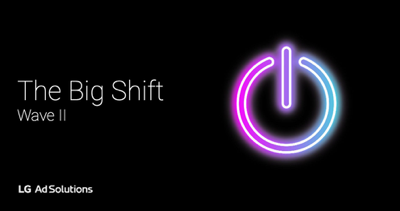This Is Not Your Grandmother's TV. LG's Tony Marlow On How CTV Is Transforming TV Advertising
In our latest Thought Leaders Circle video, LG Ad Solutions CMO Tony Marlow discusses the transformative impact that Connected TV (CTV) is having on television advertising, focusing on the unique capabilities of CTV, advanced ad units and personalized advertising techniques that are redefining viewer engagement and ad effectiveness in the modern advertising landscape
TONY MARLOW: CTV and ad-supported CTV is not your grandmother's TV. By that, I mean there are ad units that don't exist to start with. So, for example, sure we have 15s and 30s—yes, that's standard, but we also have native advertising opportunities baked within the UI. So, the ad opportunities and the canvases that are available within connected environments are different from traditional TV.
I would also say we've got the ability to be much more addressable than linear was. Understanding using automatic content recognition—is it a sports household? Are they news enthusiasts? Are they movie buffs? You can use that viewership data for targeting. And then, I would say, also where we're at right now, you can use other data signals. For example, weather triggers to customize ads. You might be a clothing brand; you might worry about maintaining national scale for your campaign and also having relevance.
With weather triggers, you could have messaging for wet weather in places where it's raining, messaging for cold weather in places where it's cold, and messaging for hot weather in places where it's hot, maintaining an always-on perspective while always being hyper-relevant. And I think the power of something as simple as weather-triggered ads is yet to be fully unleashed. We have that product; leading-edge marketers are leaning into it, particularly in that instance where they want both the scale and the relevance.
And then, I think when you take that concept and you talk about the ads of tomorrow, so whether that's 12, 24 months from now, I think you start to get into generative AI. We were on course for a world where we're able to use artificial intelligence to customize an ad—potentially, in the future, on demand—customize an ad from all the signals we have for a given household to make it as relevant as possible. And it's important because people tell us that the relevance of the ad is essentially what turns it from something that's potentially annoying into something that's actually very useful, so providing relevance is key.
The last thing I would say is just to really illustrate that last point. For me, I think, you know, I'm a triathlete, right? But if you serve me an ad on my TV for women's shoes, women's running shoes, I'm just not in the market. I'm not going to buy someone else's shoes; I'm not going to wear those shoes. But if you give me men's shoes or maybe triathlon-based cycling shoes, it's now suddenly relevant for me. And that's a very simple example, but I think it illustrates how it just goes from "this ad is going nowhere if it's irrelevant" to "this is actually very useful and I'll consider these products or services if it is relevant," and that's what the difference is.




